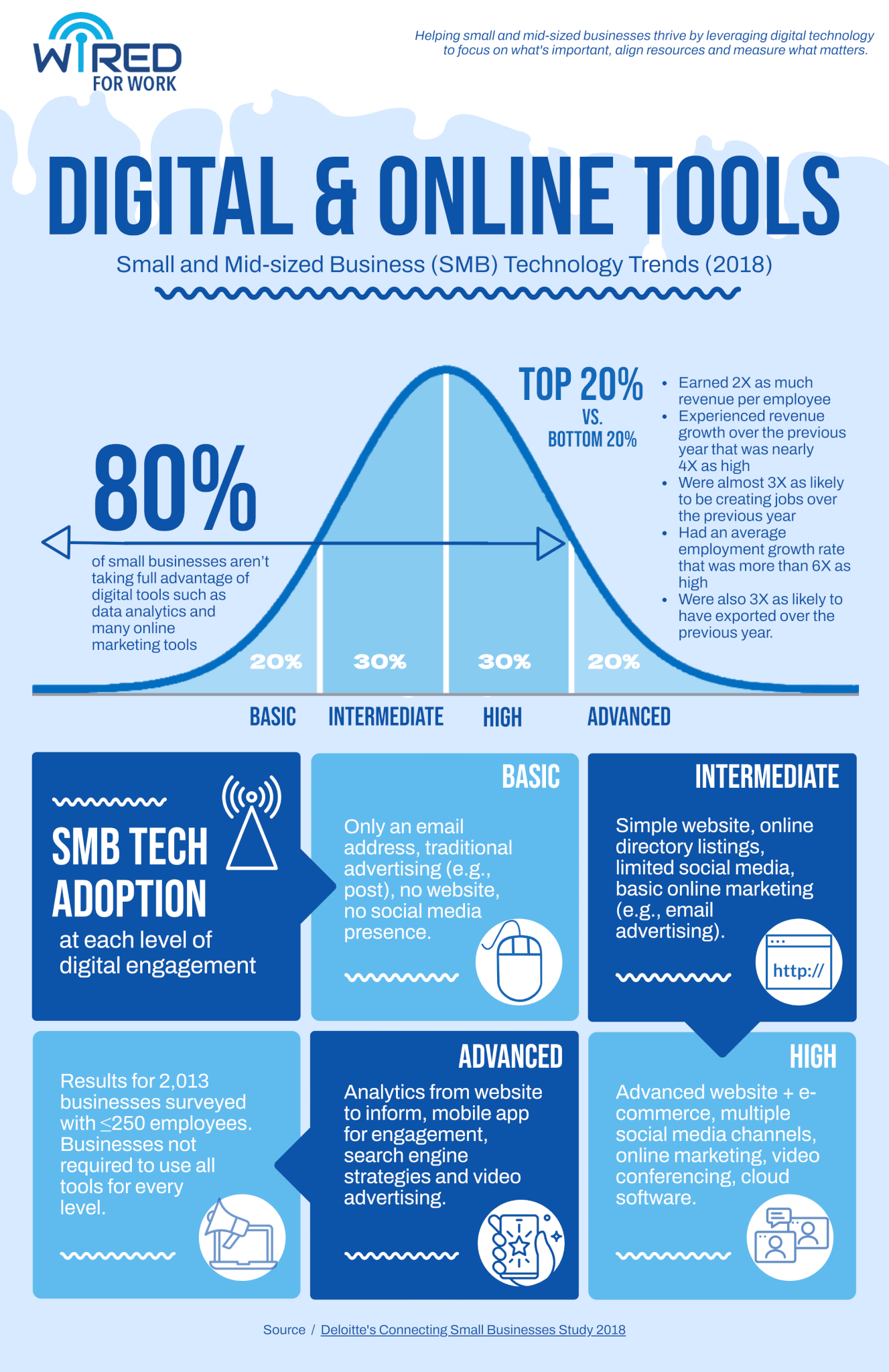The benefits to businesses using digital tools including online marketing methods and e-commerce are significant. If that wasn’t known before the pandemic, it certainly is now. For many small businesses, access to and use of digital tools were responsible for their survival. Because of the relatively small cost of these tools, businesses now have the opportunity to access new markets that were unaccessible before and to target new customers that were unreachable before.
According to Deloitte’s analysis in Connected Small Businesses in the US report a few years ago, digitally advanced small businesses realized significant benefits compared to businesses with low levels of digital engagement. They:
- Earned 2X as much revenue per employee
- Experienced revenue growth over the previous year that was nearly 4X as high
- Were almost 3X as likely to be creating jobs over the previous year
- Had an average employment growth rate that was more than 6X as high
- Were also 3X as likely to have exported over the previous year
Nevertheless, despite these potential gains, 80% of US small businesses were not taking advantage of digital and online tools available to them. Check out the infographic below identifying the distribution spread of digital tool adoption among small and mid-sized businesses (SMBs) and the types of tools that were used.
If you’re one of those 20% of businesses that have an email account, are using traditional marketing, but have no website, or it is in need of an update, here’s one option to get you started.
Changing Website Design
When creating a website, the expectation is to follow a standard format including a homepage, an “About Us” page, a “Contact” page, etc. However, that’s beginning to change. In fact, many sites are opting for one-page microsites that contain all the necessary info on a single scroll. These sites are easily accessible for mobile devices, which now account for more than 50% of devices accessing the internet. According to the World Advertising Research Center (WARC), by 2025 almost three quarters (73%) of internet users will access the web solely via their smartphones.
Microsites
Single-page sites, or microsites, are great for their simplicity, efficient user experience and quick mobile speed. While certain sites, such as an online store, might need more space to display their products, one-page websites are a great choice for small businesses, freelancers, consultants, resumes, landing pages, event sites, online portfolios, among others.
Some examples of one-page microsites are –
- Plastics Unlimited – shows how a business can present a a lot of information without burying the user.
- Formation Stone – another beautiful example of capturing a large amount of information without feeling overwhelmed.
- Upstate Laundramat – a great minimalistic design that includes unobtrusive top-level banner highlighting current promo.
- Ribalta – a great job of promoting a brick-and-mortar pizzeria using beautiful imagery.
- Weinbau Strenger – winery website featuring beautiful parallax effects and a smooth scroll.
- Apple Plug – a parody website. Don’t buy the product, but the design is inspiring.
- Tupuy – great product one-pager.
- Brittany Chiang – a personal website/resume is an impressive, yet simple, personal portfolio
- Finally Sexton – a beautiful wedding event one-pager that presents information in a beautiful and easily digestible way.
One-page microsites are a great way to showcase a portfolio, small business, product, event or service in an easy to access format. Plus, the best one-page microsites are mobile-responsive, scrollable, easy to navigate and have an overall theme and clear call to action.
Contact me if you’re interested in learning more about a one-page micro-site for your business.


